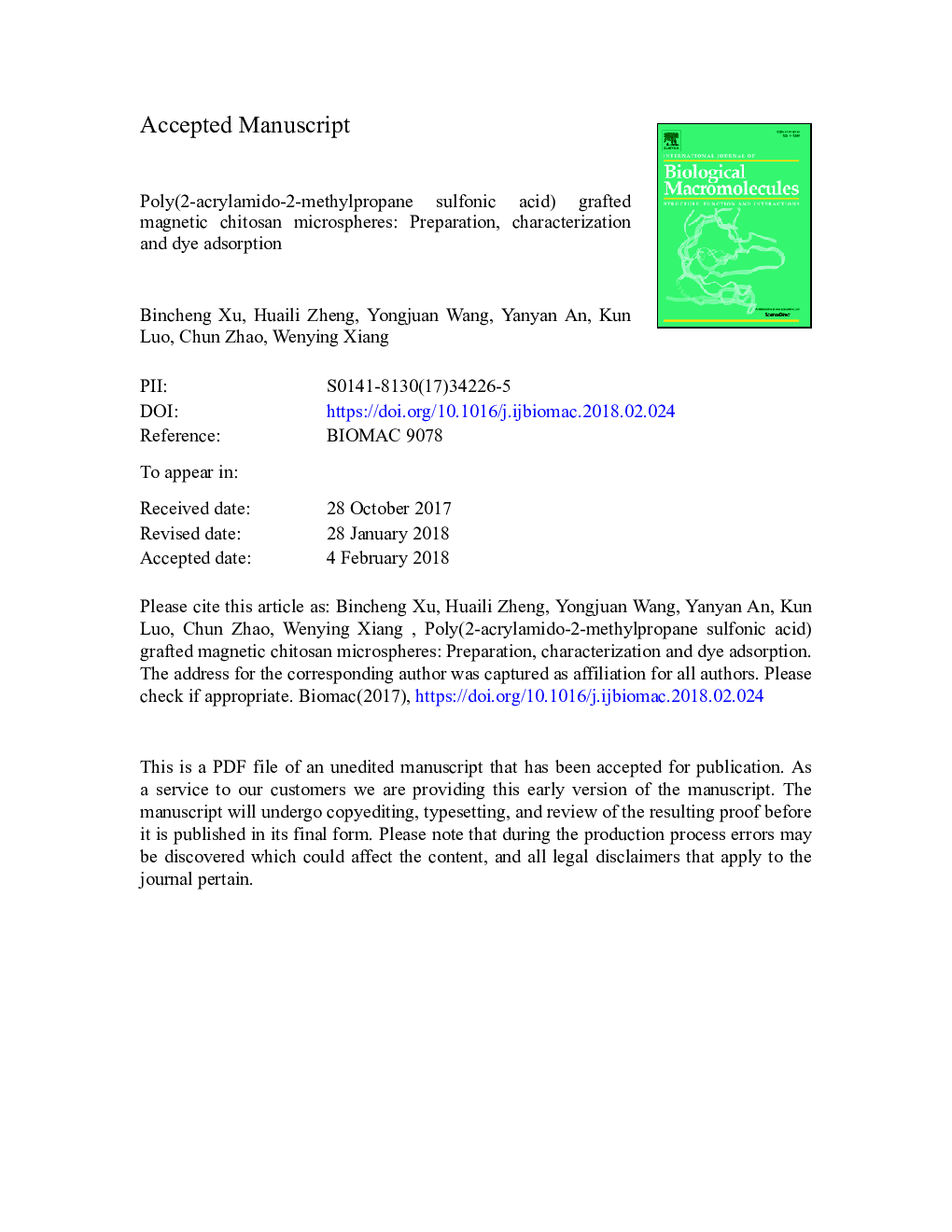| Article ID | Journal | Published Year | Pages | File Type |
|---|---|---|---|---|
| 8327735 | International Journal of Biological Macromolecules | 2018 | 39 Pages |
Abstract
A novel chitosan-based magnetic adsorbent [poly(2-acrylamido-2-methylpropane sulfonic acid) grafted magnetic chitosan microspheres, PMCMs] was successfully fabricated via free radical polymerization for effectively removing the cationic dye methylene blue (MB). The effects of initial solution pH (1.0-10.0), temperature (30-50 °C), contact time (0-660 min) and initial concentration (50-1600 mg/L) were studied. The results indicated that the adsorption capacity increased with the increasing of initial solution pH and temperature. The adsorption kinetic and adsorption equilibrium data fitted closely to the pseudo-second-order kinetic model and Langmuir isotherm model respectively, confirming monolayer adsorption. The maximum adsorption capacity of PMCMs for MB at initial solution 9.0 were 1000, 1250 and 1428 mg/g at 30, 40 and 50 °C, respectively. Furthermore, the magnetic microspheres could be easily separated using a magnet and effectively regenerated after finishing the treatment process. Therefore, PMCMs are promising candidates for the removal of dye from wastewater.
Related Topics
Life Sciences
Biochemistry, Genetics and Molecular Biology
Biochemistry
Authors
Bincheng Xu, Huaili Zheng, Yongjuan Wang, Yanyan An, Kun Luo, Chun Zhao, Wenying Xiang,
